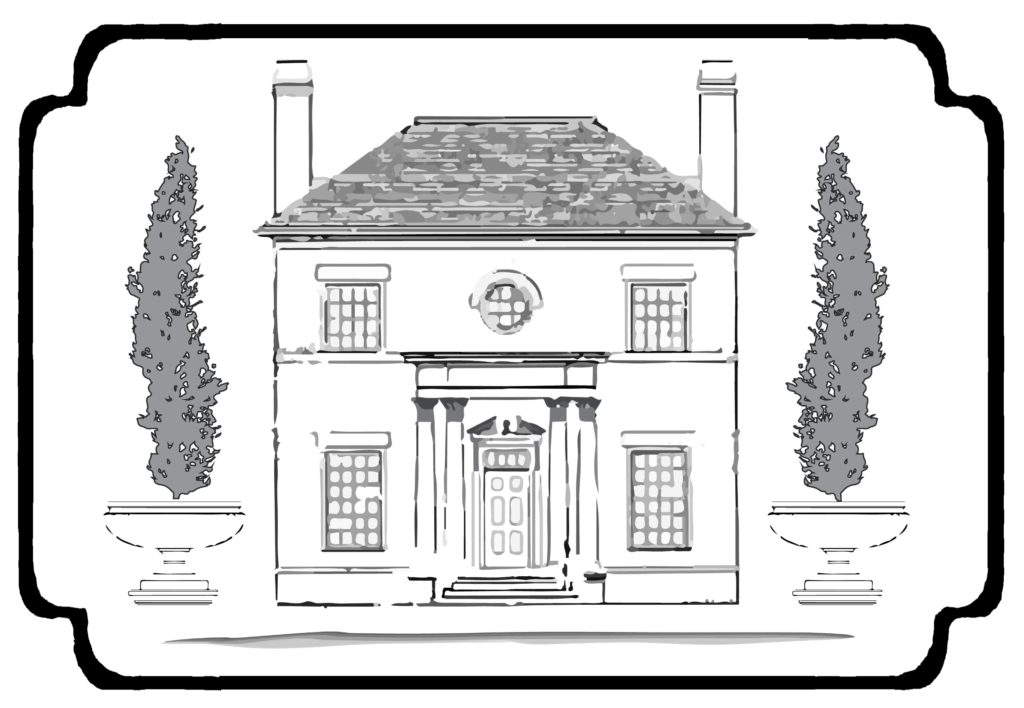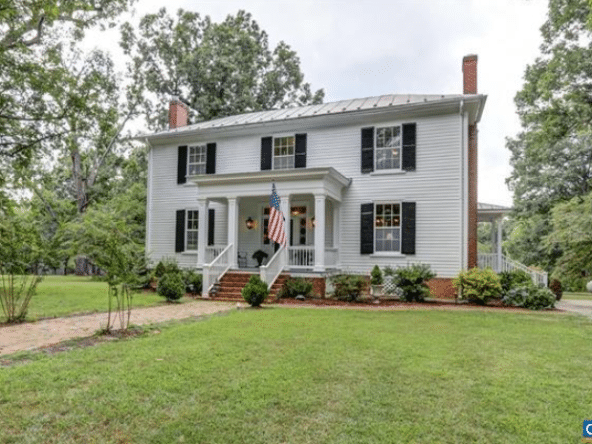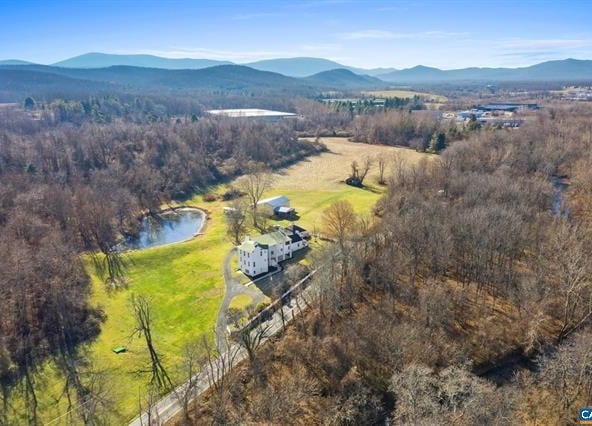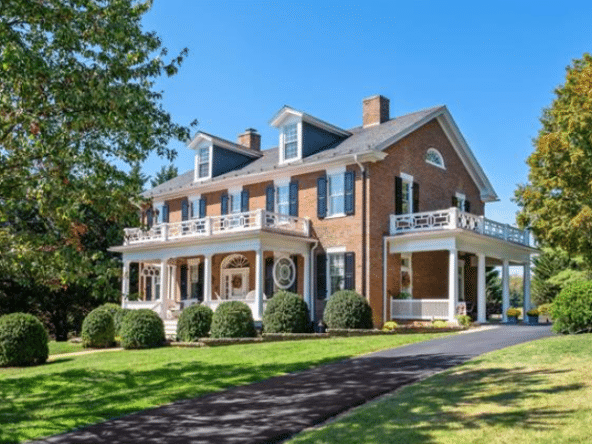VIRGINIA HISTORIC HOMES FOR SALE
Historic Homes For Sale in Virginia
Albemarle, Amherst, Augusta, Bath, Bedford, Buckingham, City of Charlottesville, Culpeper, Cumberland, Fauquier, Fluvanna, Highland, Greene, Goochland, the City of Lexington, Louisa, Madison, Nelson, Orange, Rappahannock, Rockbridge, Rockingham, City of Staunton, and the City of Warrenton.
Click here to view our new Youtube video of Virginia & its extraordinary historic homes
Welcome to Virginia Historic Homes for sale.
Where you will only find the finest historic homes for sale in Virginia.
If you are unfamiliar with the state of Virginia then allow me to explain the area and its counties.
But before I do I’ll make it easy for you to figure out where you might want to begin your search for a fabulous Virginia historic home.
Virginia historic homes in Albemarle, Fauquier, Orange, and Rappahannock Counties are the most expensive counties and hold many of the most exquisite historic homes in the United States.
Each Virginia county has its own wonderful little town or city.
Albemarle has Charlottesville. Culpeper has Culpeper. Fauquier has Warrenton. Fluvanna has Palmyra. Goochland has Goochland. Greene has Stanardsville. Louisa has Louisa. Madison has Madison. Orange has Orange. And Rappahannock has (Little) Washington.
Madison County which sits two counties north of Albemarle and below Rappahannock consists of verdant, rolling hills and backs up the ancient Blue Ridge Mountains.
The area west of Rt 29 is mostly untouched by developers and looks the way it did 150 years ago.
Madison County is a great place to begin your search if you don’t mind being far from any urban amenities.
Culpeper and Greene are good places to look, as many of their historic homes are still affordable.
Culpeper is a sleeper but also sadly in the sites of many large developers.
Greene was once the dumping ground for blue-collar workers who were priced out of Albemarle County in the 2004 building boom.
Using Albemarle County and the city of Charlottesville as the center of the Central Virginia area, we have to the north: Greene, Madison, Orange, Culpeper, Rappahannock, and Fauquier Counties.
To the east of Albemarle County/Charlottesville are Fluvanna, Goochland, and Louisa Counties.
All three counties have their share of fine 18th-century historic houses.
And are more affordable than in the north.
To the west, there’s Augusta County over the Blue Ridge Mountains (they’re only 1 mile wide) in the Shenandoah Valley.
Across the 10-mile span of the Shenandoah Valley are the formidable Appalachian Mountains (they range for 120 miles until you hit the Ohio River) and it is here that Highland and Bath County sit.
Highland is like Madison County…untouched and similar to a county in Vermont.
Bath, while more rugged terrain, has the exquisite Homestead Resort and Garth Newel Music Center.
The town is small but civilized with life mostly rotating around the historic Homestead Resort.
To the south are Amherst, Bedford, Buckingham, and Cumberland.
This is where you find the more affordable historic homes.
Bedford not so much because of its proximity to both Roanoke and Lynchburg (Liberty University).
Cumberland is mostly hunting camps and State Park, so if you can find something here you’ll be very happy.
Buckingham is mostly in pine forests planted by large pulp companies such as Westvaco.
The terrain is flat and boring unless you can find something in the north along the James River.
Amherst and Bedford are hilly and offer spectacular Blue Ridge Mountain views.
Central Virginia historic homes offer the best bang for your buck, however, if living near Washington D.C. and money is not a problem then consider searching here for an exquisite Northern Virginia historic home.
So there we have it…My area of expertise.
Let me know how I can help you find your perfect Virginia historic home.
Thanks for reading along…There’s so much more that I can tell you!

Toby Beavers – Specializing in Virginia historic homes since 2003
You may call or text me at 434-327-2999
PS – Toby Beavers is also a savvy Charlottesville realtor. So talk to me if you want to live around Charlottesville.
Fine Historic Homes and Antique Properties in Virginia
Virginia historic homes for sale

.

These wonderful historic homes & plantations are located throughout all of Virginia.
We are affiliated with Virginia Estates – Frank Hardy Properties, 1575 State Farm Blvd, Charlottesville, 22911. A member of Who’s Who in Virginia Historic Homesvirginia historic homes

historic homes for sale in virgini
We specialize in Virginia historic properties dating from 1700-1945.
For millions of Americans, preservation begins at home. The country has more than 30 million housing units built before 1950, allowing people everywhere to enjoy historic homes and neighborhoods. Recognizing and protecting these houses and apartments improves our communities and preserves our heritage.
Virginia historic homes for sale in every Virginia county

The Facts About Preservation Easements
For property owners looking to permanently protect their historic properties, one of the most effective legal tools available is the preservation easement – a private legal interest conveyed by a property owner to a preservation organization or to a government entity. The decision to donate a preservation easement is almost always voluntary, but, once made, it binds both the current owner and future owners to protect the historic character of the property subject to the easement. Preservation easements have been used to protect a wide range of historic properties across the country – from New England Cape Cod cottages to Southwestern archaeological sites, and from Virginia horse farms to mid-twentieth century Modernist houses in California. While some easements are for a period of years, in most instances easements are created as permanent restrictions.
The donation of preservation easements to qualified easement-holding organizations can provide useful tax benefits to donors, but the tax benefits will vary considerably, from property to property and from easement to easement. Property owners should be wary of any promotion suggesting a standard formula for deductions, or implying that donors can reap significant tax benefits from easements that do not significantly reduce the value of their property. And prospective easement donors should take seriously recent statements by the IRS that it plans to look carefully at whether some taxpayers are taking appropriate deductions for easement donations. For more information about easements see
http://www.nationaltrust.org/law/easements.html.

Buying and Selling a Historic Home
Shopping for historic homes–whether for actual purchase or just for fun–is a favorite activity of many Americans. The information in this section helps those people.
The Real Estate Ads feature homes from around the country that are presently for sale. They come from the classifieds section of Preservation, the magazine of the National Trust, and are updated every two months.
The Distressed Properties are buildings and other structures for sale at a greatly reduced rate. They are updated whenever new listings come in.

The Historic Real Estate Program helps agents know more about and be better stewards of historic properties. Led by Dwight Young of the National Trust, this one-day program covers the history of major American architectural styles, conservation easements, and historic preservation regulations and tax incentives. There is also a list of real estate agents who have already participated in the program.

Rehabilitating a Historic Home
Rehabilitating and restoring an old building or house is an exciting challenge. Although the process can be difficult (not to mention expensive and time-consuming), your hard work will be richly rewarded when you successfully complete your project.
Keep in mind that you do not have to do it all yourself. There are professionals to assist you during each phase of your project: architects, architectural historians, landscape architects, contractors, suppliers, researchers, librarians, and preservationists.
Also, be sure to visit the section on Protecting a Historic Home for information about topics like paint and insurance.

How Do I Start?
Before buying an older house, first determine the condition of the building by thoroughly inspecting it yourself or with a trained professional, such as an architect, structural engineer, or a building inspector with renovation experience. (A local preservation organization can probably recommend an appropriate person). Carefully map out what you want to accomplish and budget how much money you can afford to spend.
In 1989, the National Trust’s Preservation Magazine published an article on “What Every Restorer Should Know.” Author Susan Morse included the Department of the Interior’s “Ten Basic Principles for Sensitive Rehabilitation,” also known as the “Do’s and Don’ts for First-Timers and Veterans.”
Make every effort to use the building for its original purpose.
Do not destroy distinctive original features.
Recognize all buildings as products of their own time.
Recognize and respect changes that have taken place over time.
Treat sensitively distinctive stylistic features or examples of skilled craft work.
Repair rather than replace worn architectural features when possible. When replacement is necessary, new material should match the old in design, composition, and color.
Clean facades using the gentlest methods possible. Avoid sandblasting and other damaging methods.
Protect and preserve affected archeological resources.
Compatible contemporary alterations are acceptable if they do not destroy significant historical or architectural fabric.
Build new additions so they can be removed without impairing the underlying structure.
Help from the National Trust

What is the National Register of Historic Places?
It’s easy to confuse the National Trust for Historic Preservation and the National Register of Historic Places. The names are similar, and both are dedicated to protecting our historic resources.
But there are also important differences between the two. The National Trust is the country’s largest non-profit preservation organization, and provides leadership, education and advocacy to save America’s diverse historic places and revitalize our communities. You can learn more from this Web site, including from our section entitled, “About the National Trust.”

The National Register was authorized under the National Historic Preservation Act of 1966 and is administered by the Department of the Interior’s National Park Service. It is the nation’s official list of historically significant structures, and includes districts, sites, buildings, structures, and objects that are significant in American history, architecture, archeology, engineering, and culture. A National Register designation mandates that a property must be considered in the planning of federal or federally assisted projects impacting the registered property, and qualifies that site for financial assistance from governmental funds for historic preservation when these funds are available.

All National Historic Landmarks (NHLs) are included in the National Register. NHLs constitute approximately 2,000 listings in the National Register. There are different criteria for NHL designation than for National Register designation. For more information visit the National Historic Landmarks Web site, www.cr.nps.gov/landmarks.htm
The best place to learn more about the National Register is its Web site, www.cr.nps.gov/nr. It includes information on the program, the more than 70,000 listed properties, and how to nominate a property.

Plaques for Historic Buildings
Owners of local, state, or national registered buildings often mount a plaque on their property that shows its designation. There are a number of ways to obtain a suitable plaque. Historic plaque companies advertise in the National Trust’s magazine, Preservation; to avoid costly shipping charges, you may want to work with a foundry or engraving firm in your local area. Your State Historic Preservation Office (SHPO) and any local historical commission may have plaque programs, including financial assistance. Finally, and most importantly, be extremely careful when affixing the plaque to the historic building in order to avoid harming the building material.

Investing in Virginia’s Communities The federal rehabilitation tax credit is responsible for helping save architectural icons such as New York’s Grand Central Terminal, but could do much more under a new proposal.
The federal historic rehabilitation tax credit (“rehab credit”) is already the nation’s largest federal incentive that promotes urban and rural revitalization through private investment in re-using historic buildings. It has attracted private capital to historic areas of cities and towns, generated thousands of jobs, strengthened property values, created affordable places to live, and augmented revenues of state and local governments. It can, however, do much more. Although the rehab credit has been widely used as an effective tool for transforming vacant and abandoned buildings into safe, decent, and – in many cases – affordable places to live, it must be improved so that it can truly realize its full potential.

The “Community Restoration and Revitalization Act” (H.R. 3159) is just such a vehicle for the rehab credit to expand upon its already impressive track record. H.R. 3159 is sponsored by Rep. Phil English (R-PA) and includes a package of amendments that would make the rehab credit work better for main street commercial properties, particularly where there is a critical need for affordable housing and community revitalization. The bill was developed by the National Trust for Historic Preservation in close collaboration with preservation organizations, developers, tax credit users, the financing community and is also endorsed by the American Institute of Architects (AIA). Learn more about how you can support this initiative.
Community Investments
The Bank of America Historic Tax Credit Fund team recently closed two investments totaling approximately $3.6 million in combined New Markets Tax Credit and historic tax credit equity. One was a $2.8 million investment in the First Security Building project in downtown Salt Lake City. This 12-story, International-style office tower will be converted into ground-floor retail, upper floor office space, and a parking garage. The second was $840,000 in the rehabilitation of the Heimann Building, a Spanish Mission Revival-style vacant former hotel that will become office, meeting and classroom space for Avance, Inc., a social services non-profit that works with low-income and predominantly Latino communities.
Neighborhood Schools
Neighborhood schools should be a vital part of any neighborhood. Learn how to protect them with materials from the National Trust, including with the new resources about school sprawl.

The National Register and Property Owners
Established under the National Historic Preservation Act of 1966, the national historic preservation program is a partnership between the Federal, State, Tribal and local governments; private organizations; and the public. The Act and its provisions establish the framework within which citizens plan, identify, evaluate, register, and protect significant historic and archeological properties throughout the country. Central to this framework is the National Register of Historic Places–the Nation’s official list of cultural resources worthy of preservation, administered by the National Park Service (NPS), Department of the Interior. Properties listed in the Register include districts, sites, buildings, structures, and objects that are significant in American history, architecture, archeology, engineering, and culture.
Historic places are nominated to the National Register by nominating authorities: the State Historic Preservation Officer (SHPO) of the State in which the property is located, the Federal Preservation Officer (FPO) for properties under Federal ownership or control, or by the Tribal Historic Preservation Officer (THPO) if the property is on tribal lands. Anyone can prepare a nomination to the National Register; generally nomination forms are documented by property owners, local governments, citizens or SHPO, FPO or THPO staff. During the time that the SHPO, FPO or THPO reviews the proposed nomination, property owners and local officials are notified of the intent to nominate and public comment is solicited. Owners of private property are given an opportunity to concur in or object to the nomination. If the owner of a private property, or the majority of private property owners for a property or district with multiple owners, objects to the nomination, the historic property cannot be listed in the National Register. In that case, the nominating authority may forward the nomination to the NPS only for a determination of eligibility. If the historic property is listed or determined eligible for listing, then the Advisory Council on Historic Preservation must be afforded the opportunity to comment on any Federal project that may affect it.
Nominations submitted through the States must first be approved by a Review Board appointed by the SHPO (unless otherwise provided for by state law) before being reviewed by the NPS. Nominating authorities forward nominations to the NPS to be considered for registration if a majority of private property owners has not objected to listing. During the National Register’s evaluation of nomination documentation, another opportunity for public comment is published in the Federal Register.
There are no Federal historic property designations that place Federal restrictions on private property owners. States and localities may have laws to encourage the preservation of their historic places. Some have enacted their own identification procedures; some use listing in the National Register as an indicator of historic significance. State and local historic preservation programs often provide some protection against the possible harmful effects of State funded, licensed, or assisted projects. Some provide limited financial assistance to owners in the form of grants, loans, or tax benefits. They may establish other protections for preservation purposes. Programs differ from State to State, and within States; your SHPO or local planning department can provide more information.

Key Points about the National Register Process for Property Owners
Listing in the National Register honors the property by recognizing its importance to its community, State, or the Nation. Many property owners propose National Register nominations. Under Federal law, private property owners can do anything they wish with their National Register-listed property, provided that no Federal license, permit, or funding is involved. Owners have no obligation to open their properties to the public, to restore them, or even to maintain them, if they choose not to do so. To ensure public participation in the nomination process, property owners and local officials are notified of proposed nominations to the National Register and provided the opportunity to comment. In addition, once a nomination is submitted to the National Park Service another public comment period is published in the Federal Register.

Private property owners may object to the proposed nomination of their property to the National Register. If a majority of private property owners objects to a nomination, then the property cannot be listed in the National Register. Federal agencies whose projects affect a listed property must give the Advisory Council on Historic Preservation an opportunity to comment on the project and its effects on the property. Owners of listed properties may be able to obtain Federal historic preservation funding, when funds are available. In addition, Federal investment tax credits for rehabilitation and other provisions may apply.
Every agency of the Federal government is responsible for pursuing its own mission and mandates in a manner that is also in accordance with the National Historic Preservation Act. In particular, Section 110 of the Act calls on all Federal agencies to establish–in conjunction with the Secretary of the Interior–their own historic preservation programs for the identification, evaluation, and protection of historic properties. These individual agency programs vary greatly in scope, depending in large measure on the degree to which the agency owns, controls, or affects historic properties. The NPS Federal Agency Preservation Assistance Program carries out a number of activities on behalf of the Secretary of the Interior to assist Federal agencies in meeting their historic preservation responsibilities pursuant to Section 110 of the Act. These activities are carried out in accordance with the Secretary’s own specific responsibilities under the Act for assisting other Federal agencies. For further information on Federal Agency Historic Preservation, visit www2.cr.nps.gov/pad/fapa_p.htm.
Tribal Historic Preservation
The NPS Tribal Preservation Program assists Indian tribes in preserving their historic properties and cultural traditions. The program originated in 1990, when Congress directed the NPS to study and report on preservation funding needs. The findings of that report, the Keepers of the Treasures–Protecting Historic Properties and Cultural Traditions on Indian Lands, are the foundation of the Tribal Preservation Program.

In 1996 the national historic preservation program entered a new era, as fourteen Indian tribes were approved by NPS (with many more to follow) to assume national program responsibilities on tribal lands, pursuant to Section 101(d) of the National Historic Preservation Act. Among the responsibilities assumed by these tribes are conducting historic property surveys, maintaining permanent inventories of historic properties, nominating properties to the National Register of Historic Places, and reviewing Federal agency undertakings pursuant to Section 106 of the Act. For further information about NPS Tribal Preservation Program, its products and partners, and for a list of TPOs, visit www2.cr.nps.gov/index.htm.

Other Historic Preservation Web Links
 Advisory Council on Historic Preservation
Advisory Council on Historic Preservation Anacostia Trails Heritage Area
Anacostia Trails Heritage Area Anne Arundel County Trust for Preservation, Inc.
Anne Arundel County Trust for Preservation, Inc. Baltimore City Heritage Area
Baltimore City Heritage Area  Baltimore City Historical Society
Baltimore City Historical Society Baltimore County Historical Trust
Baltimore County Historical Trust
Canal Place Heritage Area Catonsville Historical Society
Catonsville Historical Society Chesapeake Bay Gateways: John Smith’s Voyages of Exploration
Chesapeake Bay Gateways: John Smith’s Voyages of Exploration Dorchester County Historical Society
Dorchester County Historical Society Frederick County Landmarks Foundation
Frederick County Landmarks Foundation Great American Station Foundation
Great American Station Foundation Heritage Conservation Network
Heritage Conservation Network Historic American Buildings Survey/
Historic American Buildings Survey/
Historic American Engineering Record Historic Annapolis Foundation
Historic Annapolis Foundation Historic St. Mary’s City
Historic St. Mary’s City Historic Takoma, Inc.
Historic Takoma, Inc.  Historic Towson
Historic Towson Laurel Historical Society
Laurel Historical Society  Lower Eastern Shore Heritage Area
Lower Eastern Shore Heritage Area Maryland Military Monument Commission
Maryland Military Monument Commission National Center for Preservation Technology and Training
National Center for Preservation Technology and Training National Park Service “Electronic Rehab”
National Park Service “Electronic Rehab” National Register of Historic Places
National Register of Historic Places National Trust for Historic Preservation
National Trust for Historic Preservation National Trust for Historic Preservation Book Catalog
National Trust for Historic Preservation Book Catalog National Trust for Historic Preservation Library
National Trust for Historic Preservation Library Peerless Rockville
Peerless Rockville  Preservation Easement Trust, Inc.
Preservation Easement Trust, Inc. Preservation Howard County
Preservation Howard County  Preservation Magazine
Preservation Magazine Preservation Maryland
Preservation Maryland  Preservation North Carolina
Preservation North Carolina Preservation Trades Network
Preservation Trades Network  Preserve/Net
Preserve/Net Prince George’s County Historical Society
Prince George’s County Historical Society  Salisbury Historic Districts
Salisbury Historic Districts Seminary at Forest Glen
Seminary at Forest Glen  Silver Spring Historical Society
Silver Spring Historical Society Sources of Financial Assistance for Historic Preservation Projects
Sources of Financial Assistance for Historic Preservation Projects The Heritage Education Network (THEN)
The Heritage Education Network (THEN) The Valleys Planning Council, Inc.
The Valleys Planning Council, Inc.
Toby’s Testimonials














